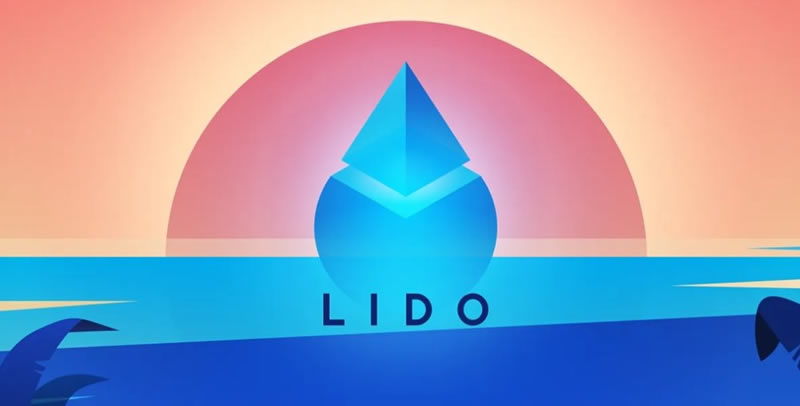In Ethereum 2.0, the generation of new blocks will be the responsibility of validators, who pledge ETH, verify transactions, generate new blocks and maintain the security of the centralized network. In theory anyone who can control a sufficient amount of staked ETH can LidoFinance. Currently, more than 31% of the pledged ETH on the Ethereum beacon chain is distributed by LidoFinance. Having said all this, what investors are most concerned about is how long it will take to withdraw Lido after staking it? This question has not been discussed yet. Generally speaking, 1-2 days is enough. Next, I will explain it in detail.

Lido staking usually requires 1-2 days to wait, and the exchange ratio is 1:1. If you use a third-party aggregator, the waiting time is shortened to 1-5 minutes, but there will be slight exchange slippage. Therefore, if you are not in a hurry to use it, using Lido directly is a better choice.
Lido is a project in the cryptocurrency field that aims to provide Staking services for Ethereum 2.0. By staking their ETH, users can participate in ETH2.0 network validation and receive corresponding rewards. However, the time it takes to get back your staked funds may vary due to a variety of factors including network congestion, Lido’s terms of service, and Ethereum 2.0’s protocol rules. Users need to clearly understand these factors and make appropriate decisions before participating in staking.
Generally speaking, pledged ETH needs to go through a certain locking period on the Ethereum 2.0 network. In ETH2.0, staked funds must be locked in the network for a certain period of time to support the verification process. The length of this lockdown period can be weeks or even months. However, Lido may provide some liquidity, allowing users to redeem their LidostETH tokens at any time. Nonetheless, such redemptions may be subject to certain restrictions and fees.
Lido staking risk is low. Lido adopts a centralized validator approach, operating validators through carefully selected node operators. The pledge pool is the most important smart contract in Lido. Users can deposit and withdraw encrypted assets, mint or burn st assets by interacting with this contract. The staking pool distributes deposits evenly to node operators using their addresses and verification keys. In addition, the staking pool contract is also responsible for allocating fees to the LidoDAO treasury and node operators. This design helps reduce staking risks and ensures the safety of users’ assets.
Given LidoDAO’s heavy reliance on Ethereum, any setbacks in the merger timeline or execution could have catastrophic consequences. Although this article does not delve into Ethereum 2.0, adverse events during the merger process may affect the ETH:stETH exchange ratio, such as further delays in the transition period or a crisis of confidence surrounding the transition itself.
Lido’s choice to gradually decentralize enables it to increase speed and scalability. Although Lido has a first-mover advantage compared to competitors like RocketPool, its smaller set of node operators has raised concerns about Ethereum's centralization.
The above is the detailed content of How long does it take to withdraw Lido pledge? How risky is Lido staking?. For more information, please follow other related articles on the PHP Chinese website!




